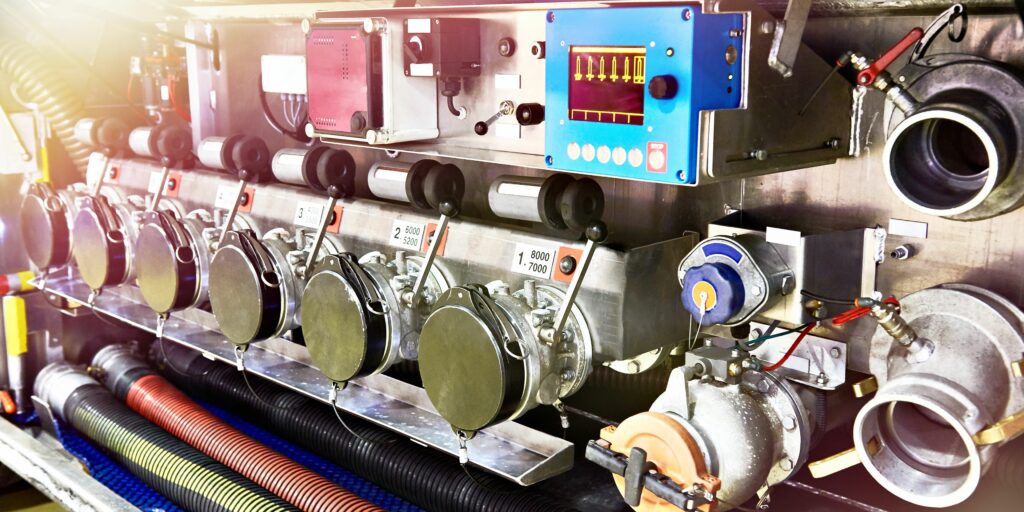Are you a gas station or convenience store owner looking to streamline your operations and soar past the competition? The secret to your success lies in mastering the art of fuel additive transportation and management. Imagine having a constant supply of fuel, adhering to safety standards effortlessly, and managing your inventory like a pro. All of this is not just possible; it’s within your reach.
The transportation and handling of these substances directly impact gas station and convenience store operations. Here’s how:
The Intriguing World of Flammable Liquids: For gas station and convenience store owners, understanding the nature of Class 3 flammable liquids, like gasoline, is vital. According to the Occupational Health & Safety Administration (OSHA), these substances, with flashpoints between 73.4 °F and 140 °F, present unique challenges. It’s the vapors, not the liquid, that pose a fire risk. Knowledge of these properties is essential for safe storage and handling, directly impacting your business’s safety protocols and customer confidence.
Flashbacks – A Hidden Danger: Vapors from flammable liquids can silently accumulate in areas like storage tanks or basements. A single spark can trigger a flashback, leading to catastrophic incidents. For gas station owners, this underscores the importance of vigilant practices in storage and transportation, ensuring safety for customers and the surrounding community.
Risky Business in Various Industries: The transportation of these liquids spans various industries, with significant risks. In the context of gas stations and convenience stores, this risk translates into a direct responsibility for ensuring the safety of fuel deliveries and storage, a critical aspect of business operations.
Storage – A Delicate Balance: Proper storage of flammable liquids is not just a regulatory requirement but a crucial aspect of running a gas station. Adhering to regulations for container use, distancing from heat sources, and specific labeling helps in maintaining a safe environment for both employees and customers.
- Proper Packaging and Labeling: All hazardous materials must be packaged in accordance with Department of Transportation (DOT) regulations. This includes using approved containers, labeling them correctly, and securing them adequately to prevent leaks or spills.
Transportation – A Structured Approach: For gas station owners, the safe transportation of fuel is a cornerstone of business continuity. Ensuring that fuel suppliers follow strict guidelines and use appropriately equipped containers minimizes risks during transit and delivery, safeguarding your business’s fuel supply.
- Route Planning and Notification: Carefully plan the transportation route to avoid densely populated areas, environmentally sensitive areas, and potential hazards like bridges and tunnels. Notify relevant authorities, such as state and local agencies, of the transportation schedule and route.
- Vehicle Maintenance and Safety Features: Transportation vehicles must be regularly maintained and equipped with safety features, such as fire extinguishers, spill containment kits, and warning signs.
The Art of Receiving and Handling: Effective receiving and handling of fuel and additives are as important as their transportation. Ensuring that your staff follows protocols like powering off equipment during unloading and having spill kits ready is key to maintaining operational safety and efficiency.
Driver Training and Certification: Drivers transporting hazardous materials must be properly trained and certified to handle these substances safely. This includes understanding the properties of the materials, emergency response procedures, and DOT regulations.
PPE – The First Line of Defense: Investing in Personal Protective Equipment (PPE) for your staff is crucial. Providing items like goggles, respirators, and gloves, and prioritizing the use of disposable PPE minimizes health risks and enhances safety, a vital factor in maintaining a responsible workplace.
Emergency Response Plan: Develop a comprehensive emergency response plan that outlines procedures for responding to spills, leaks, fires, and other hazardous events. This plan should be readily accessible to all personnel involved in the transportation process.
For gas station and convenience store owners, effective fuel supply chain management is crucial. It encompasses ensuring consistent fuel availability, adhering to safety and compliance standards, efficiently managing inventory, and upholding fuel quality. These elements are vital for maintaining customer satisfaction, safety, and overall business success.
Improve your convenience store and gas station operations with expert fuel and additives transportation from GOCO Transports. Contact us to day to learn how.
